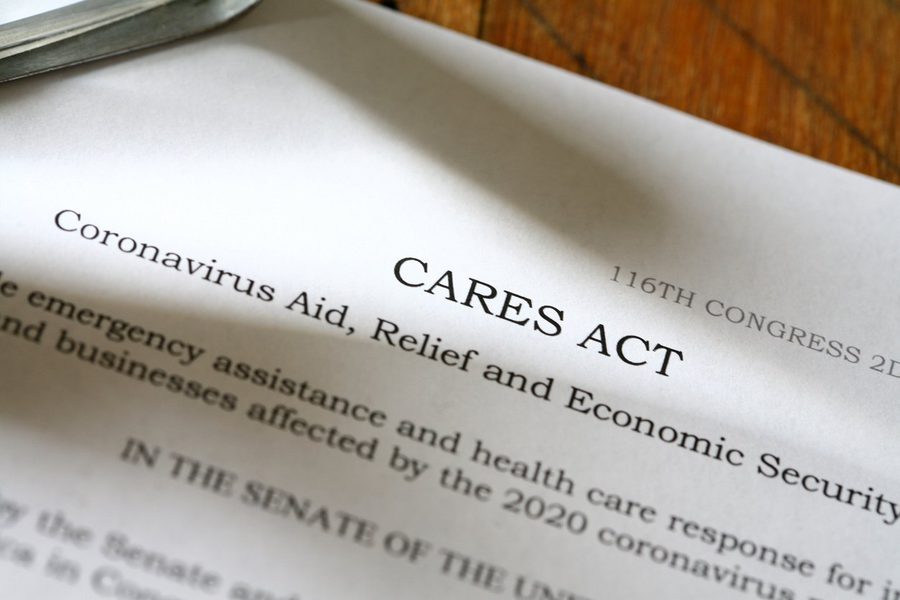Note: This information is from 2020 but much has changed since then. Please be sure to discuss your unique financial situation with your McKinley Carter Advisor or another trusted professional.

On March 28, 2020, Congress passed the CARES Act, providing an array of provisions to help the economy. Here's a guide and links to valuable resources.
On March 28, 2020, Congress passed the massive CARES Act ( Coronavirus Aid Relief and Economic Security), providing an array of provisions to help various segments of the economy. Incentives to small businesses, direct checks to individuals, and relief for plan participants and retirees cut across many segments of the country to assist job security, future employment, and daily needs. The information below is intended as a guide to various aspects of the program, those impacted, and links to valuable resources.
Of the estimated $2 trillion CARES bill, 25% is allocated to severely impacted industries, 25% for wage and payroll tax relief, 15% for state and local governments, 25% to individuals in the form of rebate checks, and the remainder to support the health care system. The execution of many of these provisions is just beginning, and a massive undertaking.
As the federal filing dates for 2019 tax returns and payments and first quarter 2020 estimated payments have been automatically moved to July 15, many CPAs have turned their attention to helping small businesses file for the relief offered (on a first-come, first-serve basis) under the small business Payroll Protection Program. Most states followed suit using the July 15 extension date, with Virginia being one local exception. (Virginia maintained their filing date of May 1st but delayed the payment until June 1.) However, states are handling the 2020 first quarter estimated payment differently. While many states have changed to July 15, several are using other dates or making no change at all.
Direct to Individuals:
“Recovery Rebates” will be paid to individuals ($1,200 single, $2,400 joint, $500 for children under the age of 17), phased out as income exceeds $75,000 (single)/$112,500 (head of household)/$150,000 (joint). The payments will be based on the latest filed return, and the manner of dissemination will require patience. The basis for payouts will be the 2018 or 2019 return, and some taxpayer’s 2020 return will be used for calculating the rebate and payment in 2021. Resources:
- https://www.irs.gov/newsroom/economic-impact-payments-what-you-need-to-know
- https://www.irs.gov/coronavirus
Retirement Plan Provisions/Participants/Retirees:
Distributions from corporate retirement accounts can be taken by those impacted by Covid-19 and falling within various health, employment, financial or family guidelines, which will be liberally applied. Those impacted are able to take a distribution up to $100,000 without penalty for early distribution.
Distributions, however, are income. For tax return purposes, the distribution is to be picked up evenly for 2020, 2021 and 2022, and amended returns can be filed for money that is rolled back into the plan. Nevertheless, one could opt to claim all of the distributions on their 2020 return.
Additionally, the current maximum loan from a plan is $50,000. The CARES act increases this maximum loan to $100,000, as well as defers any required 2020 loan repayment by one year.
Not to ignore past participants, required minimum distributions (RMDs) are suspended both for 2019 balances to be paid in 2020, and for 2020 balances. A similar treatment was afforded “retirees” in 2009 during the financial crisis. If you have already taken a distribution for 2020 and would like to return the RMD to your retirement account, you should check with your advisor. Unfortunately, if the distribution relates to a beneficiary IRA, rollovers back into the IRA are not possible.
Small Business Loans, Payroll Tax Credits and Payroll Tax Deferral:
Our recent blog, New Cares Act is Valuable Tool for Small Business Owners, describes various programs available for business in the form of forgivable loans, tax credits, and payroll tax deferrals for businesses and self-employed individuals. It is important to note that loans are available on a first-come, first-serve basis.
Resources:
IRS Employee Retention Credit Under the CARES Act FAQs
AICPA – Small Business Relief COVID
U.S. Department of Labor – COVID 19 and Family and Medical Leave Act Questions and Answers
